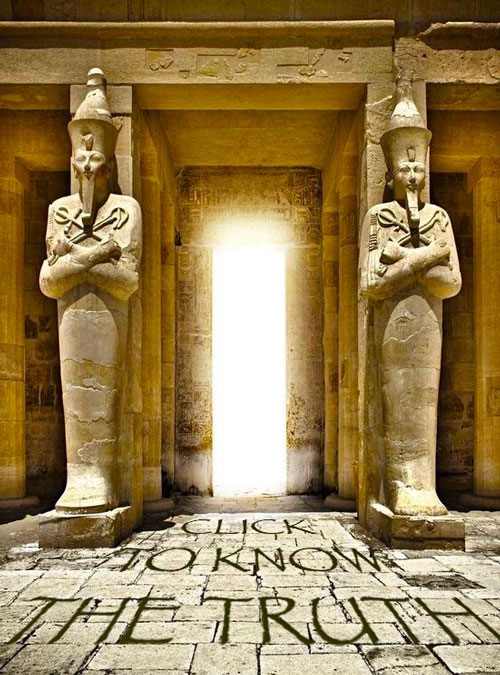Illumination
This monument has mystified travellers since the dawn of time.

Although the Sphinx has suffered over the centuries the archetype itself is perennial. Today the Red Lion remains the most enigmatic sculpture on Earth and has influenced many cultures around the world—versions can be seen in Greece, Turkey, India, Sri Lanka, Burma and Thailand. Below is an example from an Attic grave monument:

There is much disagreement over the age of the Sphinx but the water erosion around the enclosure would suggest that it predates dynastic Egypt. Indeed, the age is so great that even the pharaohs considered the Sphinx to be ancient. By studying the weathering, geologists concluded that this monument was carved during the archaic Zep Tepi.

The Sphinx was inspired by the inverted pentagram that crosses key points in the body. Since the demonic third eye is “all power” the angelic heart is “all love” and we might say that the our third eye is the serpent and our heart is the lion. So the “beast’s” strengths are perception and truth while “beauty’s” qualities are intuition and faith.
These polarities are also described in the Myth of Osiris. In this famous saga, Set divides while Mafdet unifies. It also implies the seed that germinates as a series of fractal stars within the nose—the blueprint of the cosmos.

Above: the lyre of Hermes aka the lute of Pythagoras
So if we belly breathe “power as love” via the nose, then this leads naturally to deeper levels of awareness. In other words, they are complimentary—for within the depths of power, love finds its strength and within the tenderness of love, power finds its purpose. Below we can see the Starseed that we call the Magician:

But Carl Jung takes us one step further: “As opposites never unite at their own level, a supraordinate ‘third’ is always required, in which the two parts can come together…it is able to unite them both, reconciling their conceptual polarity through its form and their emotional polarity through its numinosity.” In other words, the spirit within the physical body that anchors opposing forces is really eternal life:

Above: consciousness is fractal, awareness is recursive, life is self-similar
This is the Ankh or the Circle of Willis. The Ankh was often held up to the nose in Egyptian reliefs; nasal breathing balances our energy and hence our state. When we realise this, peace prevails between the mirrored forces of duality and non-duality. As the eternal spirit then, the Ankh is absolute—it has no counterpoint.

When it comes to the unification of the opposites, our demons will only give up their names when they are loved; if the shunned aspects of ourselves feel safe enough to step from the shadows. Loving the darkness then, is really a leap of faith—the hero’s journey towards reconciliation. In other words:
SELF-LOVE BREEDS SELF-AWARENESS
In truth, our psyche is not really full of demons but rather the disassociated parts of ourselves that we have not yet learned to love. We must therefore transmute the grief, the fear and the pain. We never know when our demons will show up, though they normally rear their heads when we’re emotionally vulnerable. Perhaps now we can introduce the Riddle of the Sphinx:
I am the dance of Sun and Moon,
Of day and night, death and bloom.
In every facet I am there,
In every breath, in every prayer.
When I wake I feel the thrill,
Of renewing my eternal will.
Through mortal eyes I see it all,
As empires rise and ever fall.
Within my heart a lion’s might,
A serpent’s eye burning bright.
Devoted love and sovereign power
Guide my steps, hour by hour.
In the darkness I learned to see,
The living image inside of me.
I am the spirit in the void—
The gleam of gold, unalloyed.
Beauty and the beast combine,
Faith as truth, a duet sublime.
So who am I of human strife,
The essence of eternal life?
“Quintessential Man” then, balances the polarities of Aquarius and Leo. This is the individuated Jungian person—the whole, authentic, king once known as Osiris.

But the Sphinx hides a deeper secret within its geometry. Glancing above, we can see 2D nested pentagons, which in 3D implies a dodecahedron and an icosahedron. At centre is the nose, the organ that metabolises the life force.
The figure below represents illumination—a dodecahedron combined with an icosahedron. These polygons are duals, so connecting the centres of the faces of a dodecahedron yields an icosahedron and vice-versa. Both shapes have the same number of edges and together hint at one last mystery:

Salvation really represents the balance of the sixth chakra (a dodecahedron) and the second chakra (an icosahedron). Earth is a liquid planet and is therefore alive by implication. As an enormous sphere, Her water temples resonate with peace where the magician has the sensitivity to pick it up.

If the edge crossings were vertices, then the mapping on a sphere would be the same as that of a deltoidal hexecontahedron (above). This grid informs the 62 sacred energy centres on Earth, allowing us to integrate the wisdom of the planet and the cosmos. Because we know two grid points (Giza and Freycinet) we can infer other key locations around the world. For those seeking revelation, these retreats are good places to start.

Judging by the globe above, other nodes include the Eye of the Sahara, Santiago de Compostela, San Lázaro, Cahuachi, Easter Island and Angkor Wat. These water temples have long been sought after for their peaceful qualities.
This is what was expressed in the teachings of many famous alchemists. They didn’t want anyone to follow Them—instead, They wanted all of us to reach a state of grace.
